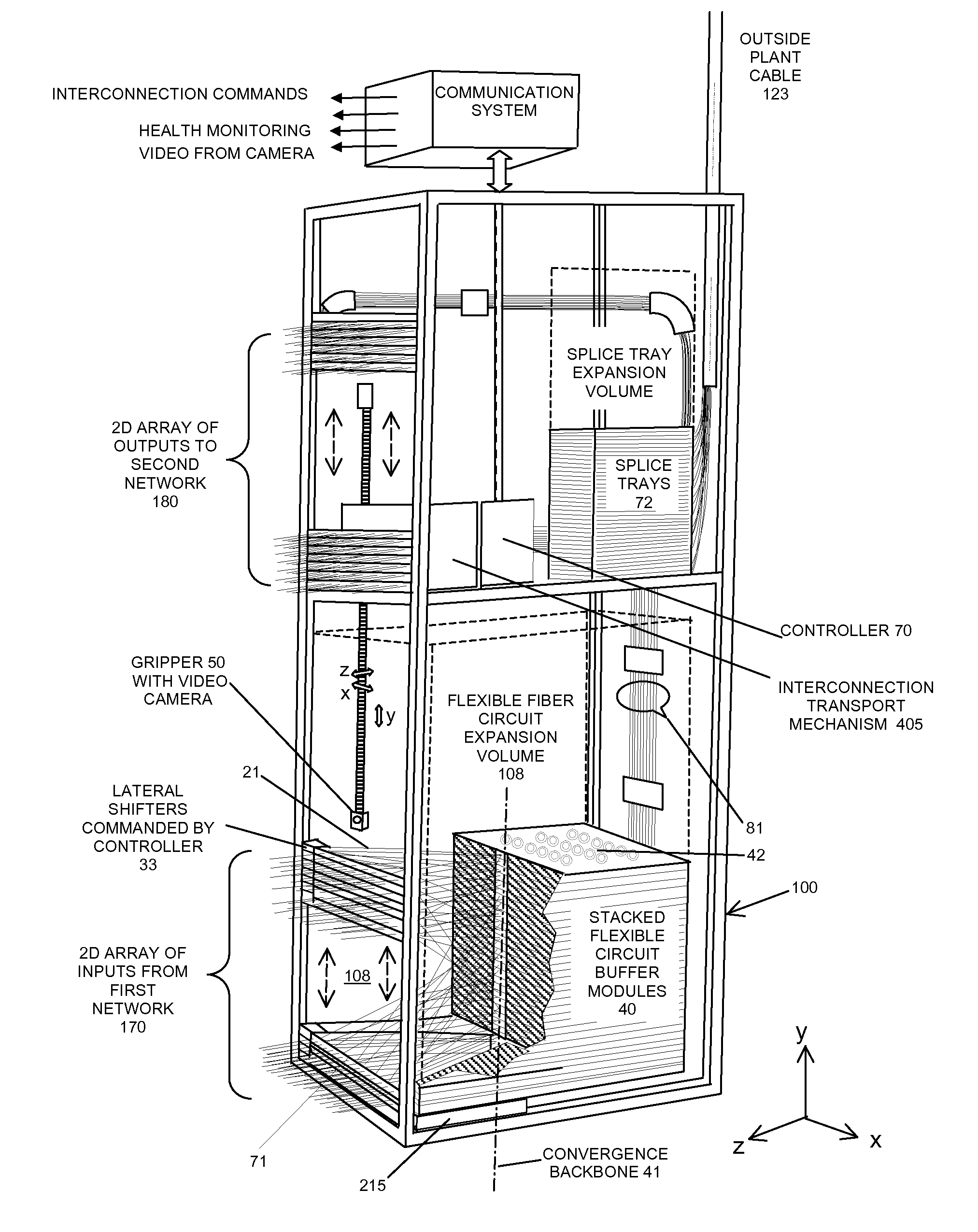Braided Fiber Optic Cross-Connect Switches
- Summary
- Abstract
- Description
- Claims
- Application Information
AI Technical Summary
Benefits of technology
Problems solved by technology
Method used
Image
Examples
Embodiment Construction
[0043]The all-fiber cross-connect switching system disclosed in this invention is illustrated in the partial cutaway, perspective view of FIG. 1. This system is characterized by 100's to 1000's of flexible fiber interconnection lines or strands 21 suspended between two planes and intermixing within a circuit expansion volume 108 in the system interior. The placement, ordering and subsequent physical reconfiguration of strands is based on relationships derived from the Theory of Knots and Braids. Topological algorithms uniquely describe the dynamic nature of strand boundary conditions during the reconfiguration process.
[0044]Reconfigurable fiber connections are made internal to the expansion volume 108, between a two-dimensional array of reconfigurable input terminals 170 and an intermediate, substantially one-dimensional array or convergence backbone 41 bounding the interconnect volume. The suspended fiber lines 21 therebetween follow substantially straight-line paths and define a t...
PUM
 Login to View More
Login to View More Abstract
Description
Claims
Application Information
 Login to View More
Login to View More - R&D
- Intellectual Property
- Life Sciences
- Materials
- Tech Scout
- Unparalleled Data Quality
- Higher Quality Content
- 60% Fewer Hallucinations
Browse by: Latest US Patents, China's latest patents, Technical Efficacy Thesaurus, Application Domain, Technology Topic, Popular Technical Reports.
© 2025 PatSnap. All rights reserved.Legal|Privacy policy|Modern Slavery Act Transparency Statement|Sitemap|About US| Contact US: help@patsnap.com



